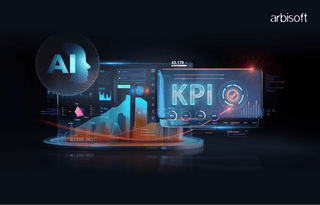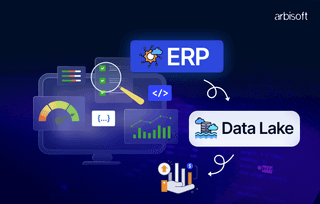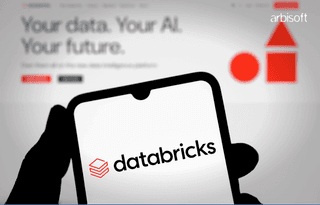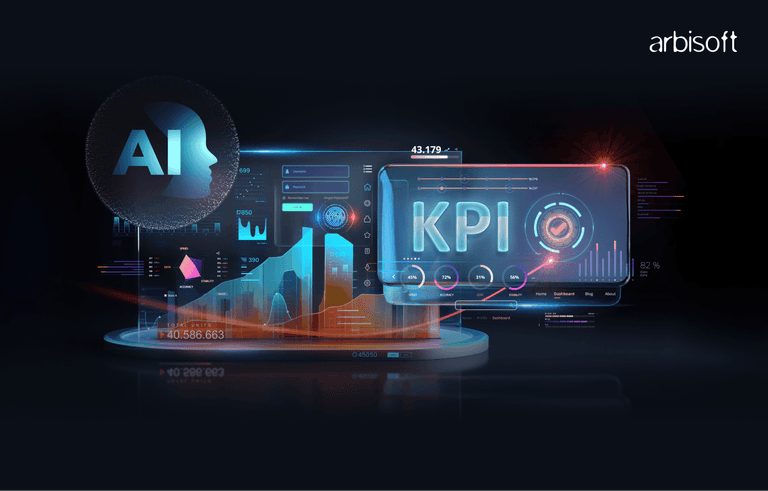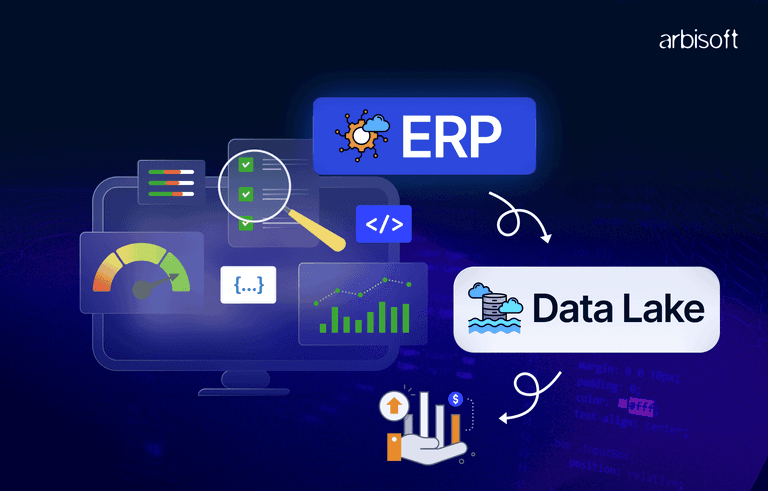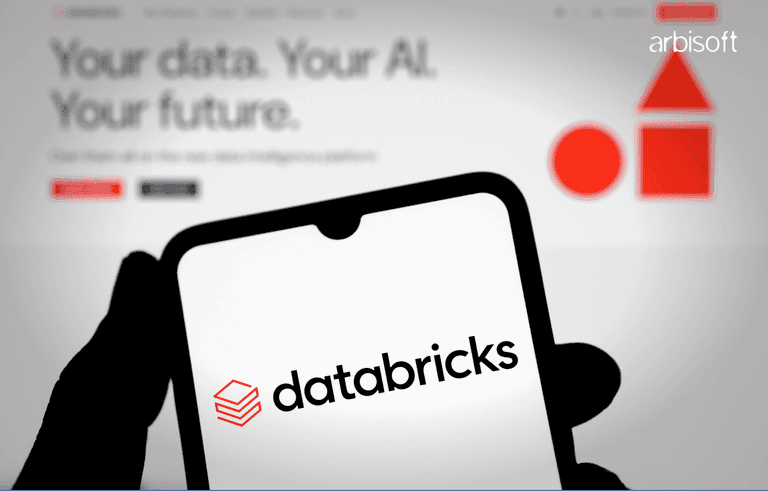We put excellence, value and quality above all - and it shows




A Technology Partnership That Goes Beyond Code

“Arbisoft has been my most trusted technology partner for now over 15 years. Arbisoft has very unique methods of recruiting and training, and the results demonstrate that. They have great teams, great positive attitudes and great communication.”
Google I/O 2025 - Google Just Went All-In on AI

Google I/O 2025 just wrapped up—and if there’s one clear takeaway, that Google is bringing AI to everything it touches - literally!
At this year’s Google I/O, AI wasn’t just a jargon used—it was the entire vocabulary. Over a tightly packed two-hour keynote, CEO Sundar Pichai and his team revealed a bold vision for AI that touches nearly every product in the company's portfolio.
From revamped search experiences to AI agents booking your coffee meetings, Google doubled down on its vision of an AI-first future. But this isn’t just about smarter chatbots—it’s about reshaping how we work, shop, code, and even see the world.
Let’s break down the highlights.
1. Gemini Gets a (Brain) Upgrade
Google’s flagship AI model, Gemini, is now turbocharged with Gemini 2.5 Pro and Gemini 2.5 Flash, offering better coding, reasoning, and real-time interactions. With the recent addition of Google DeepMind’s AlphaEvolve, some more promising key upgrades to this new centerpiece include:
- Deep Think Mode - A premium feature (for now) that lets Gemini 2.5 Pro weigh multiple answers before responding, aiming to reduce hallucinations. Think of it as AI with a "second opinion" button.
- Gemini Live - Real-time voice and camera-powered interactions. Ask questions while pointing your phone at something, and Gemini will talk you through what’s happening. You will see this on your Chrome soon - for both Mac and Windows!

- Gemini in Gmail - 400 million users now interact with Gemini monthly, with new integrations in Gmail (personalized replies mimicking your writing style) and Google Meet (real-time translation for Spanish, more languages soon).
- Project Astra - Born from DeepMind - this feature combines vision, memory, and reasoning. Think of it as your AI co-pilot—literally seeing what you see and helping you get things done. Use it to fix your bike with real-time video guidance or make calls, remember objects, and understand what it sees through your camera.
2. AI Mode Is the New Google Search
Search is changing—completely.
- AI Mode is now rolling out across the U.S. as a tab within Search. Ask multi-part, complex queries and get direct answers instead of just links.
- You can now try on clothes virtually, ask context-based questions using your phone camera, or get personalized shopping recommendations.
Liz Reid, Google’s head of Search, put it bluntly in an interview:
“The search results page was a construct.”
The old way of Googling? That’s history.

3. Search Gets a $250/Month Pricetag
Google’s answer to AI-powered search competition? AI Mode, now live for all U.S. users. But the real power comes at a cost:
- AI Ultra Plan - For $249.99/month, users get early access to tools like Project Mariner (automates web tasks like ticket purchases) and Deep Think. It also bundles 30TB of storage, YouTube Premium, and Veo 3 video generation. Google is straight to business with this one!
- Virtual Try-Ons - Upload a selfie, and AI Mode overlays clothes or rugs onto your image, complete with physics-based draping.
“It’s not some pre-captured model—it’s you.” - Google’s commerce VP.
- Search Live - Point your camera at a broken bike, and Gemini walks you through repairs step-by-step. And the world is really excited for this one! - The feature is rolling out this summer.

And then came the surprise…
3. Android XR Glasses - Google Glass 2.0?
After years of whispers, Google demoed Android XR glasses—sleeker than previous attempts and powered by Gemini:
- Real-Time Translation - Two Googlers conversed in different languages with translated text projected onto their lenses (psst. despite an onstage glitch).
- Contextual Awareness - The glasses remembered a coffee shop logo from a cup, then scheduled a meeting there. Partners like Warby Parker and Samsung will launch consumer versions later this year. There are already strong talks and speculations making the rounds!
- Also coming - Project Moohan, Google’s mixed-reality headset built in partnership with Samsung, launches later this year.
4. Coding Gets an AI Copilot
For developers, Google unveiled tools to automate grunt work:
- Jules - This async coding agent tackles bug fixes, writes tests, and even clones your GitHub repo to a secure Cloud VM. Now in public beta.
- Stitch - Generate UI designs and frontend code from text or images. Export to Figma or HTML/CSS in seconds.
- Colab Goes Agentic - Tell Colab your goal, and it writes/edits code autonomously. “Watch as it takes action in your notebook,” Google teased.

5. AI Goes Hollywood
Creative tools got a massive boost. And honestly, some of them showed performance way better than the real cameras in action! Creatives and filmmakers, please take notes.
- Veo 3 - Generates video with sound effects and dialogue. Demoed a surreal clip of a flying car powered by a giant chicken—awkward but ambitious.
- Flow - This is a filmmaker’s AI toolkit. Upload images or prompts, then stitch scenes into a narrative. Partner Darren Aronofsky’s team is already experimenting with this one.
- Imagen 4 - Faster, sharper image generation, rendering textures like fur or water droplets. A 10x speedier variant is coming soon in this major upgrade.
6. The Fine Print (and Privacy Worries)
Want it all? It will cost you, but it has a wider suite of tools! However, it also comes with its own set of limitations that the users can't ignore.
- SynthID Expansion - Google’s watermarking tool has tagged 10+ billion AI-generated items. A new detector helps spot AI-made content.
- Costs vs. Control - While Pichai promised users can “turn off features at any time,” critics note AI’s hunger for data—and your $250/month.
- Stock Dip - Alphabet shares fell 1.5% post-event, reflecting investor skepticism amid rising AI costs.
At the end of the keynote, Sundar Pichai introduced FireSat, a satellite constellation to detect wildfires early using AI. One satellite is live, and more are on the way.
And Wing, Google’s drone delivery arm, is scaling up to support disaster zones—like delivering meds during Hurricane Helen.
The Big Picture
Google’s message is clear - AI isn’t just assisting—it’s doing. It is writing, building, creating, and solving all in real-time! But even as Google showed off the future, it reminded us it’s still arriving—slowly. Most features are rolling out in beta, testing, or later this year.
Whether it’s coding, shopping, or filmmaking, the line between human and machine is blurring. But with AI Overviews already answering 1.5 billion queries monthly, there’s a big question left hanging: If Google does the Googling for us, what happens to the web?
We’re not there yet. But we’re close.
Stay tuned—and maybe hold onto your wallet.








